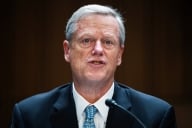You have /5 articles left.
Sign up for a free account or log in.
The writing has been on the wall for a while, and it hasn’t looked good.
First, a handful of the country’s wealthiest universities announced in October that their endowments saw tepid returns for the fiscal year that ended June 30, with Harvard University’s fund, the country’s largest educational endowment, posting a decline. Then preliminary data about this year’s annual National Association of College and University Business Officers-Commonfund study of endowments hinted at losses across higher education.
The full survey, released today, incorporates responses from 831 public and private institutions and finds that for the third time in five years the average return on higher education endowments was negative, dropping 0.3 percent for the 2012 fiscal year. The loss is a bit of bad news for an industry that hoped endowments would return to pre-recession growth levels after two years of double-digit returns.
The study underscores the troubling financial picture across higher education, as both public and private colleges and universities see more constraints on revenue streams. Most states have slashed appropriations to higher education since 2008, market forces and loan fears continue to pressure tuition revenue, and endowments now seem to be an unreliable replacement for lost revenue.
| Best when viewed with updated browser |
“Volatility is something managers of endowments have learned to live with and deal with,” said John S. Griswold, executive director of the Commonfund Institute, at a presentation for reporters Thursday. “I think it’s a part of reality going forward as well.”
The study also questions whether, in the long run, institutions will be able to continue to spend from their endowments at the rates they traditionally have, about 4.5 percent to 5 percent of the funds' total value. To manage that and keep up with inflation, institutions need returns of about 7.4 percent annually.
Only the wealthiest have been able to average returns of that level over the past 10 years, with much of that coming before the recession. Over all, 10-year returns averaged 6.2 percent annually, and 5-year returns averaged only 1.1 percent. As a result of the weak growth, the proportion of endowments that colleges and universities spent in 2012 was 4.2 percent, the lowest rate of the last decade. It was as high as 5.1 percent in 2003.
If universities that fund a large portion of their budgets through endowment returns cannot maintain levels of payout at their normal levels, they will either have to start looking for other sources of revenue to maintain existing operations, cut costs, or dip more deeply into the endowment principal. Programs that are traditionally funded through endowment revenues even at less-wealthy institutions, such as scholarships and professorships, could also be vulnerable.
This is the challenge facing Grinnell College, which has one of the country’s largest endowments on a per-student basis and funds about half its annual operating budget from endowment revenues. Earlier this year, the president announced an effort to rethink tuition and other revenue streams out of fear that the endowment would not return to pre-recession growth. For the 2012 fiscal year, the college’s endowment dropped 7.8 percent.
NACUBO and Commonfund officials said the “flat” year is unusual. Investments tend to either show strong growth or large losses. Last fiscal year was only the eighth time in the 38-year history of the survey that returns have been between -3 percent and 3 percent.
The study also found that gifts to many institutions were down last year, with 39 percent of institutions expecting a decline in giving and only 41 percent expecting an increase.
More of the Same
The 2012 study continues several trends that have played out over the life of the study, most notably a gap between wealthy institutions and the rest of the sector.
As in most other years, institutions with larger endowments tended to have a higher percentage invested in “alternative strategies” that include private equity, venture capital, real estate and hedge funds. This is typically because many alternative strategies have minimum investment requirements that small colleges can’t meet, and because wealthy institutions are more likely to have active full-time investors who are more knowledgeable about different investment opportunities and can more closely monitor investment returns and adjust investments as necessary. Less-wealthy institutions tend to invest more in domestic equities and fixed-income investments like U.S. Treasury notes, which tend to see more predictable but lower returns.
As a result, the wealthy institutions tend to see higher returns over all than do less-wealthy institutions. That pattern held true again this year.
Even when they do invest in “alternative strategies,” less-wealthy institutions tend to invest in different things. Wealthier institutions have a larger percentage in private equity and real estate, while less-wealthy institutions tend to invest more heavily in hedge funds.
“The difference in returns between large and small institutions is a long-term policy issue that we need to continue to focus on,” said Verne Sedlacek, president and CEO of Commonfund.
Given the weak across-the-board returns, there was not much change in overall rankings. The top 10 contained the same universities as last year with slight changes in order (Princeton and Stanford swapped places, as did Northwestern and Texas A&M).
The negative returns this year were driven primarily by poor performance in international equities (down because of uncertainty in Europe and reduced growth in China), hedge funds and commodities. Losses in that sector were offset somewhat by gains in fixed income investments, venture capital and private equity.
Six months into the 2013 fiscal year, there is uncertainty about how returns will look. Significant uncertainty still hangs over Europe’s fiscal situation, as well as U.S. federal efforts to reduce the national debt. Earlier this month, Moody’s Investors Service predicted “some degree of volatility.”









